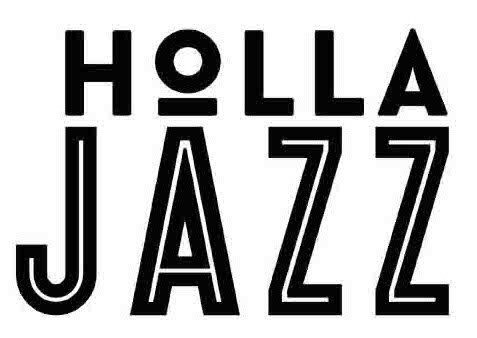Jazz Dance: The American Vernacular Dance
Jazz is undeniably an American art form. Marshall & Jean Stearns brought his book to the world detailing the history of jazz dance: Jazz Dance: The Story of the American Vernacular Dance. This book is literally the bible of American dancing that is performed to jazz music – jazz dance. The subtitle of the book is an important characteristic of the entire book – American Vernacular Dance – meaning the native and homegrown dance of the country.
Marshall Stearns takes a look at jazz dance in it’s authentic form. Not the jazz dance that has evolved into what is taught in studios around the world, but the jazz dance that grew alongside jazz music. The introduction to the book gives us a good idea of what this is about:
“The phrase jazz dance has a special meaning for professionals who dance to jazz music (they use it to describe non-tap body movement); and another meaning for studios coast to coast teaching “Modern Jazz Dance” (a blend of Euro-American styles that owes little to jazz and less to jazz rhythms). However, we are dealing here with what may eventually be referred to as jazz dance, and we could not think of a more suitable title.
The characteristic that distinguishes American vernacular dance – as does jazz music – is swing, which can be heard, felt, and seen, but defined only with great difficulty”…(xvi)
Marshall traces the origins of jazz dance and it’s development back traditional African movements. Africans had to find ways to adapt to their new environments and lifestyle. But they also wanted to retain their native traditions. Dance was that way. In the end, the blending of African body movements, coupled with the European formal dances, produced a new form of dancing to create the Afro-American Vernacular.
Jazz Dance goes on to talk about about many key pioneers who are important in the development of jazz dance. The likes of King Rastus Brown, Bill “Bojangles” Robinson, James Barton, Fred Astaire, Earl “Snake Hips” Tucker, Al Minns, Leon James, Cholly Atkins, and the list goes on. These dancers were known for their class, innovation, and their profound abilities. Stearns also discusses key shows that were instrumental in developing dance popularity on broadway in New York. One of them being Shuffle Along – the first all-Negro show to run on broadway for over 172 performances. This paved the way for more dancing, setting new trends and history in America.
But apart from the whos, and the whats, they key thing for me was taking away what jazz dance really is. Ted Lewis tells Stearns that “real jazz dancing, is done to real jazz rhythms.” He says that “pure jazz styles are 3: “the black face or Charleston, the shimmy or Gilda Gray, and the thumb-licking Pennington type”. Stearns continually stresses two characteristics of jazz dance, that can be traced to the African-American tradition: propulsive rhythms, and improvisation. From this tradition, much came later to the dancing that we see on television, broadway, in night clubs, and ballrooms. Stearns did a few interviews with Al Minns and Leon James talking about and demonstrating jazz dance. Below is a clip.
So then what happened? Why is this not the jazz that is taught nationwide? This isn’t what I learned growing up from my teacher. Unfortunately jazz, like lindy hop, never developed into a professional stage dance like ballet, or modern dance. Instead those dancers were pushed to the side as ballet and modern dance companies took over stages, and danced to some sort of jazz music. With regards to the Lindy Hop, Roger Pryor Dodge notes that “the new dance has none of the style, refined or not, of the Negro dance. With its few movements derived from jazz, it became a choreographer’s idea of what dancers with ballet and modern training should do to jazz.” Sadly, this very thing happened to vernacular jazz dance. New choreographers were being born, who borrowing characteristics from jazz dance. Fosse, Ailey, Jerome Robbins, and others were blending movement from the vernacular with their vocabulary. The fact that it wasn’t authentic was of little importance. It was that it lacked the propulsive rhythms which we saw and felt from it’s pioneers. In the past, those that praised vernacular dance were also jazz critics who had good feeling for swing movement. The understanding of the dance has disappeared. As more forms of mass communication developed such as magazines and television, there became less people who understood what vernacular jazz dance was; communicating their ideas and opinions to the masses. By the sixties, the old dancers were dying, and the vernacular was disappearing as the identity of jazz was being born. The vernacular dance that set the tone for generations of televisions and broadway producers, and dancers, had disappeared.
It’s important for all dancers to learn about authentic jazz dancing. From this art form we see the tone that was set for many of the social dances that proceed such has popping, locking, hip hop house, b-boy/b-girling, etc. But now jazz and any other street dance forms seem so far from each other, when in actuality, they have so much in common. Hopefully we can find a way to bring back the jazz dance that was to be a popular form around the world again. It makes sense why hip hop pioneers get extremely upset when they see an art form which they played a part in creating, turning into something completely different.
Thank you so much to Marshall and Jean Stearns. Marshall’s passion for jazz music and dance, had lead me to help understand myself more. His commitment to the art and it’s preservation will never be forgotten and will always be remembered. He has left us with a beautiful gift to continue pushing vernacular jazz dance forward.


